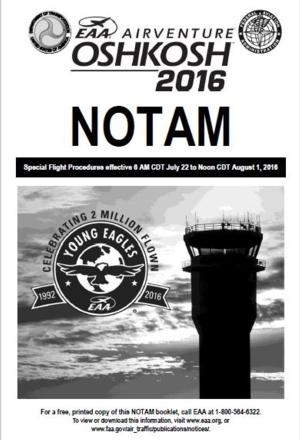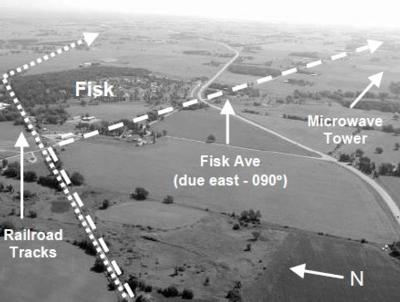Practicing Your Pilot Skills Prior To Arrival Relieves The Tension, Adds To The Fun, And Increases Safety
This is the fourth of a 6-part series by Earl Downs that we hope will help pilots who have never flown into EAA AirVenture Oshkosh and landed at Wittman Regional Airport. The remaining parts of our “how to” series will be published every Friday over the next 2 weeks.

For a recreational flyer, flying into Wittman Regional Airport during EAA AirVenture is part of the adventure. You’ll probably hear some wild stories about the arrival and departure procedures, but if you are prepared it’s a lot of fun. This time we’re going to talk about sharpening your pilot skills in the landing pattern.
The Safety Speech
The practice maneuvers I’ll be discussing are normal and safe, but don’t practice any flight maneuver you are not comfortable with without the help of an experienced safety pilot or flight instructor. Keep in mind that any training you receive from a CFI in preparation for Oshkosh could be counted towards a flight review.
Pilot Skills
Landing at Oshkosh during EAA AirVenture requires that you have the pilot skills necessary to safely get the job done. A way to evaluate this would be to simply look at the sport pilot or private pilot check ride test requirements and make sure you can repeatedly perform to those minimum standards. Remember, runway 36R and 18L is actually a 50-foot wide taxiway, and runways will be assigned that are not aligned into the wind.
Here’s a truncated version of what it says in the sport pilot PTS and private pilot ACS. If you can consistently meet this standard, you’ll do okay at Oshkosh.
- Touch down within the available runway, within 400 feet beyond a specified point with no drift, and with the airplane’s longitudinal axis aligned with and over the runway centerline.
- Maintain crosswind correction and directional control throughout the approach and landing sequence.
Stabilized Approach
A stabilized approach is one in which the pilot establishes and maintains a constant angle glidepath towards a predetermined point on the landing runway. It usually means that the airplane is in its final landing configuration.
There are various ideas about where the stabilized approach should be established. One concept is that instrument approaches should be stabilized at 1000 feet AGL and visual approaches at 500 feet AGL. At EAA AirVenture this is probably not going to happen.
The point is, it is of paramount importance that all pilots affix some point at which the approach is stabilized, or make a go-around. A high-performance aircraft needs a higher decision point, while a low performance recreational type airplane might be safer to establish that point at a much lower altitude. In my Zenith Zodiac, I use 300 feet AGL as my ‘must be stabilized’ point.
Suspended Descent
It may be necessary to suspend the descent after you are established in what you believe is a stabilized approach on final, but are still above your decision point. An example of this could be a clearance to land at a “DOT” (more on the DOT is coming up) further down the runway. A suspended descent means maintaining approach configuration and speed while holding altitude. This is another maneuver that should be practiced before heading for Oshkosh. Here’s how you might do this:
- Choose a suitable practice area and pick an altitude that is no less than 1500 feet above the ground as your make-believe airport altitude.
- Fly a traffic pattern 1000 feet above the make-believe airport altitude and fly a downwind, base, and final, just like you are making an approach to a real runway.
- After establishing the make-believe final in landing configuration, apply power to level the airplane without changing configuration while holding airspeed and altitude. Note the power setting.
-
Hold this suspended descent configuration for 10 seconds or so, then reestablish your stabilized approach. Practice this several times.

The Colored Dots
Separation minimums are reduced when AirVenture procedures are in effect, and the DOTS allow more landings to occur in a shorter time. If you are assigned a colored DOT point on the runway, make a normal descending approach to that point. If assigned a DOT that is further down the runway than the normal threshold, do not drag the airplane down the runway at low altitude to your landing point. Make your pattern and descent appropriate to the assigned DOT as if it is the beginning of your runway.
The landing on an assigned DOT is not a spot landing contest. It simply means that the DOT represents the touchdown zone of the runway, and an appropriate touchdown would be within 400 feet beyond a specified DOT.
To practice “DOT landings,” find a suitably long runway, and practice flying patterns to a landing point further down the runway. The NOTAM provides you with distance information for the dots, and you could use this for guidance when practicing.
Other Pattern Considerations
Some of the landing patterns at AirVenture will be right turns. If you’re rusty with right-hand patterns, go out and get some practice at it. Some of the patterns are noted as requiring a continuously descending short approach. These also need to be practiced, and this is a time when the help of an experienced pilot or flight instructor might be a really good idea. Even on these close patterns, a minimum altitude at which you are stabilized must be determined.

Radio Procedures Beyond Fisk
After rocking your wings at Fisk you’ll be assigned the appropriate transition for your landing runway, and this is when the radio really gets busy (AKA Crazy!). Almost all the communication is from the controllers with no response required from pilots. This even includes the clearance to land. If you think it’s absolutely necessary to talk to the tower, identify your aircraft the way you did at Fisk; do not use your N-number. Of course, if the tower requests a response, respond quickly and keep it short.
Coming Up
Next week, June 24, our “Flying Into AirVenture” series will discuss the rollout after landing procedures and how to make a go-around if needed.
(Images from AirVenture NOTAM)
 ANN's Daily Aero-Term (04.25.24): Airport Rotating Beacon
ANN's Daily Aero-Term (04.25.24): Airport Rotating Beacon ANN's Daily Aero-Linx (04.25.24)
ANN's Daily Aero-Linx (04.25.24) Klyde Morris (04.22.24)
Klyde Morris (04.22.24) Airborne 04.24.24: INTEGRAL E, Elixir USA, M700 RVSM
Airborne 04.24.24: INTEGRAL E, Elixir USA, M700 RVSM Airborne 04.22.24: Rotor X Worsens, Airport Fees 4 FNB?, USMC Drone Pilot
Airborne 04.22.24: Rotor X Worsens, Airport Fees 4 FNB?, USMC Drone Pilot





